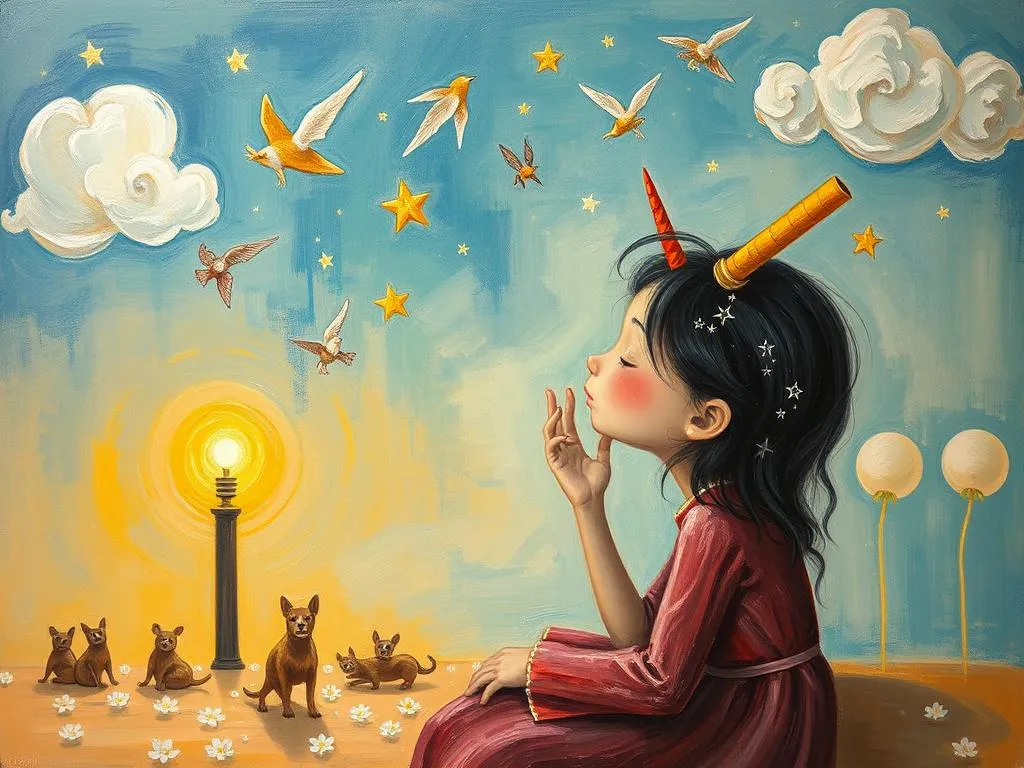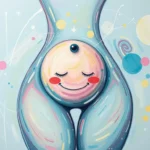
Dreams have a way of revealing our deepest fears, desires, and struggles, often cloaked in symbolism that can leave us pondering their meanings long after we wake. Each symbol is like a puzzle piece, waiting for our conscious minds to fit them into the larger picture of our lives. Have you ever woken up from a vivid dream, feeling a mix of confusion and curiosity? You’re not alone. Understanding dream symbolism can unlock profound insights about our psyche, guiding us toward personal growth and self-discovery.
As we journey through this exploration of dream symbolism, I invite you to open your mind and heart to the messages your dreams may carry. By interpreting these symbols, we can gain clarity, make sense of our emotions, and even navigate the complexities of our waking lives. Together, we’ll delve into the intricate world of dream symbolism, drawing from cultural perspectives, psychological insights, and practical applications to enrich your understanding.
The Language of Dreams: Decoding Symbolism
Dreams often communicate through a rich tapestry of symbols that resonate with our personal experiences and cultural backgrounds. In various cultures, certain symbols carry specific meanings. For instance, water can symbolize emotions, while flying often reflects a desire for freedom or escape. To decipher the language of your dreams, consider these key symbols:
-
Water: A powerful symbol of the unconscious, water can represent your emotions, intuition, and the depths of your psyche. A calm lake may suggest tranquility, while a turbulent sea might signal emotional turmoil.
-
Houses: Often representing the self, different rooms in a house can signify various aspects of your personality. A cluttered attic might indicate unresolved issues, while a well-kept garden may reflect personal growth or nurturing.
-
Animals: Animals embody different traits and instincts. A lion can symbolize courage and strength, whereas a snake might suggest hidden fears or transformation. The specific animal’s behavior and your feelings toward it play a crucial role in interpretation.
-
Flight: Dreaming of flying can evoke feelings of liberation and empowerment, but it may also reflect a desire to escape from life’s pressures. Consider the context of your flight—whether you’re soaring high or struggling to stay aloft.
-
Chase: Being pursued in a dream often points to underlying anxieties or unresolved conflicts in waking life. The identity of your pursuer can provide insights into what you may be avoiding.
By recognizing these symbols and their potential meanings, you can start to connect the dots between your dreams and your waking life. Remember, while these symbols may have general interpretations, the most accurate meanings arise from your personal context and feelings.
Dreamscapes of the Mind: Scenarios That Speak
Understanding the nuances of dream symbolism often requires examining specific experiences. Here are a few scenarios that illustrate how dreams can reflect our inner landscapes:
1. The Drowning Dream
Imagine dreaming of being submerged underwater, struggling to breathe. This scenario may symbolize feelings of being overwhelmed by emotions or life circumstances. You might be facing a difficult situation, and your subconscious is expressing the need to confront these feelings. If you dream of breaking through the surface for air, it signifies resilience and the desire to reclaim control.
2. The Lost Traveler
In another dream, you find yourself lost in an unfamiliar city, searching for a way home. This scenario often reflects feelings of uncertainty or anxiety about your direction in life. Perhaps you’re at a crossroads in your personal or professional journey, and your mind is urging you to explore new paths or decisions. The search for home represents a longing for stability and a place where you feel secure.
3. The Repeating Exam
You arrive at a classroom for an exam you haven’t prepared for, and the clock ticks ominously. This classic dream scenario may indicate stress related to performance or self-doubt. You might feel unprepared or afraid of judgment in your waking life. The dream encourages you to confront these fears, reminding you that it’s okay to seek help and allow yourself grace in the face of challenges.
4. The Transformative Butterfly
In a more uplifting scenario, you dream of witnessing a butterfly emerging from its chrysalis. This dream symbolizes transformation and personal growth. You may be entering a new phase in your life, shedding old beliefs and embracing change. The butterfly serves as a reminder of your potential, urging you to embrace your journey with openness and courage.
5. The House of Mirrors
You find yourself in a house filled with mirrors that distort your reflection. This scenario can represent how you perceive yourself and your insecurities. You may be grappling with self-image issues, and the dream signifies the importance of self-acceptance and authenticity. Recognizing the distortions can lead to a more compassionate view of yourself.
These scenarios highlight how our dreams can offer valuable insights into our emotional states and life situations. By reflecting on these experiences, we can begin to unravel the messages they carry.
The Path to Wholeness: Embracing Personal Growth
Understanding dream symbolism is not just an exercise in curiosity; it’s a pathway to personal growth and self-awareness. By embracing the messages from our dreams, we can take concrete steps toward healing and transformation.
-
Journaling: Keep a dream journal by your bedside to capture your dreams as soon as you wake. This practice not only aids in remembering the details but also helps you identify recurring themes and symbols in your dreams.
-
Reflecting on Emotions: After recording your dreams, take time to reflect on your emotions during the dream. How did you feel? What situations in your waking life resonate with those feelings? This reflection can unveil connections that guide your personal growth.
-
Exploring Cultural Contexts: Consider the cultural significance of the symbols in your dreams. Different cultures have various interpretations, and understanding these can enrich your perspective. For instance, in some cultures, dreaming of a snake is a sign of transformation, while in others, it may evoke fear.
-
Engaging in Creative Expression: Use your dreams as inspiration for creative outlets such as art, writing, or music. This process allows you to explore your subconscious in a tangible way and can lead to deeper insights about your life.
-
Seeking Guidance: If you find certain dreams particularly troubling or confusing, consider discussing them with a therapist or a dream analyst. Professional guidance can provide clarity and help you navigate any emotional challenges.
Embracing the symbolism in your dreams opens the door to self-discovery and healing. As you actively engage with your dreams, you cultivate a deeper understanding of yourself and your journey.
Reflecting on the wisdom found within your dreams is a powerful practice. They are not merely random images or thoughts; they are messages from your unconscious, urging you to listen, learn, and grow. As you navigate the complexities of your waking life, remember that your dreams are allies, illuminating your path toward wholeness. The next time you find yourself in the realm of dreams, ask yourself: What do these symbols reveal about my desires, fears, and aspirations? Embrace the journey, for within the tapestry of your dreams lies the key to your personal evolution.







